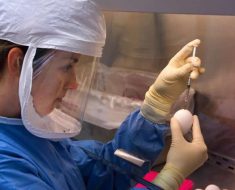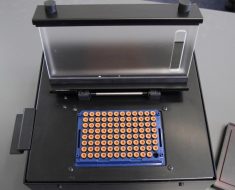Real-world registry data show that the SYNTAX score II 2020 (SSII-2020) reliably predicts mortality but not major adverse cardiovascular events (MACE) 5 years after stenting and coronary bypass surgery (CABG) in patients with complex coronary artery disease.
The new score represents the latest iteration of the SYNTAX score II, redeveloped for patients with de novo three-vessel and or left-main disease using 10-year mortality outcomes from the SYNTAXES trial. It includes many of the same clinical variables as its predecessor and adds diabetes and current smoking.
The SSII-2020 was recently externally validated — not without controversy — using 5-year mortality data from the FREEDOM, BEST, and PRECOMBAT trials and MACE data from the three trials as well as EXCEL.
The current results raise doubt, however, about use of the SSII-2020 by local heart teams to select between CABG surgery and percutaneous coronary intervention (PCI) in these complex patients.
“It’s useful to identify those patients who will derive a mortality benefit for a maximally invasive as compared to a minimally invasive procedure. But if a clinician were to run this calculator and it said equivalent survival would be predicted for PCI and CABG in that particular patient, then the score is no longer useful because it does not provide any prognostic value for MACE,” said John J. Squiers, MD, from Baylor Scott & White The Heart Hospital, Plano, Texas, who was not involved in the study.
The paper is important because it’s the first to validate the new score, at least for mortality, in a real-world population, but patients also want to know which procedure will help prevent a stroke, myocardial infarction (MI), or reintervention, he noted. The SSII-2020 was derived to predict 10-year outcomes, but the Japanese CREDO-Kyoto registry only followed patients out to 5 years, highlighting the need for longer-term validation in diverse populations.
“Now we have a start, that it’s at least partially validated in the real world, but we need more studies to ascertain whether this is going to be a useful clinical tool or if this will just remain an interesting artefact of research,” Squiers said.
Senior study author Patrick Serruys, MD, PhD, said he was very pleased that the SSII-2020 could still predict mortality with surgery in the contemporary CREDO-Kyoto registry despite being derived from 10-year-old data. Intravascular imaging was used in 67% of the cases and drug-eluting stents in 90% of cohort 3, compared with imaging in just 12.7% of patients and no drug-eluting stents in the SYNTAX trial.
“That was, for me, reassuring to say ‘hey, what was 10 years old is still applicable in terms of mortality’ but on the MACE, we will have to find a way to bring the precision back because that’s very relevant, of course,” Serruys, National University of Ireland, Galway, told theheart.org | Medscape Cardiology.
He observed that a good clinician will try to use whatever is in the literature when calculating the complex interaction between anatomy and clinical characteristics of the individual patient in front of them.
“I don’t say that the SYNTAX II 2020 is the solution; it’s a progression and I can guarantee that in the upcoming years, I will keep working to try to make it the most precise,” Serruys said. “Of course, I would like to say that it’s also precise for MACE, but in the current state it’s not. That’s a weakness, and we will have to work on other parameters and get another contemporary trial.”
MI, the “Troublemaker”
The study included 7362 patients with three-vessel and or left-main coronary disease who underwent PCI (n = 4318) or CABG (n = 3044) in the CREDO-Kyoto registry cohorts 2 and 3 and were followed for a median of 5.3 years.
Agreement between observed and predicted event rates after either procedure and the treatment benefit, or absolute risk difference (ARD), were assessed by calibration plots. Patients with the highest ARD had more cardiovascular risk factors and had higher predicted mortality rates after PCI or CABG but, after adjustment, the two groups were well matched.
As reported in the Journal of the American College of Cardiology, the SSII-2020 showed “helpful discrimination” for predicting 5-year all-cause death (C-index = 0.72) and 5-year MACE (C-index = 0.66).
The observed mortality rates after PCI and CABG were not significantly different in patients with a lower (< 4.5%) predicted ARD (observed ARD, 2.1%; 95% confidence interval [CI], -0.4% to 4.44%).
There was a significant survival difference, however, favoring CABG in patients with a predicted ARD of at least 4.5% (observed ARD, 9.7%; 95% CI, 6.1% to 13.3%).
To illustrate how the SSII-2020 could guide treatment selection, a central illustration highlights two patients: one 60 years old, the other aged 75 years, both with diabetes and both free from left-main disease. Although both patients have diabetes, the second patient uses insulin, is a current smoker, has a lower creatinine clearance rate, and higher SYNTAX score.
The first patient has predicted 5-year mortality rates of 7.8% after PCI and 5.6% after CABG and predicted ARD of 2.2%, suggesting equipoise for PCI or CABG. The second patient has predicted 5-year mortality rates of 53.5% and 40.6%, respectively, and a predicted ARD of 12.9%, thus should be referred for CABG.
The 4.5% ARD cut-off appears to have been “somewhat arbitrarily selected” by the authors but was validated within the CREDO-Kyoto registry as well as in patients from the SYNTAX trial, Squiers and J. Michael DiMaio, MD, Baylor University Medical Center, Dallas, Texas, point out in an accompanying editorial.
In contrast, the calibration of predicted and observed treatment benefit for MACE was poor, mainly driven by poor predictions for MI and stroke, noted the investigators, led by Hironori Hara, MD, University of Amsterdam, the Netherlands. As a result, “the SSII-2020 for predicting 5-year MACE could not recommend a specific treatment with sufficient accuracy.”
“One of the troublemakers here is, of course, the definition of myocardial infarction, which in the CREDO-Kyoto is the fourth universal definition. But at the time of the SYNTAX trial, we had a quite different definition of myocardial infarction based on the ratio of [creatine kinase] CK [to] CK-MB. Basically, everything which was collected in the first seven days was called periprocedural MI,” Serruys explained.
A letter published earlier this year contends that the authors “exerted bias in the choice of unrepresentative and suboptimal datasets” when creating the new score, and excluded data favoring CABG over PCI in left-main disease at 5 years from the EXCEL trial, which has been ensnared in controversy for years, in part, over its periprocedural MI definition.
“This latest study might be best read as a cynical attempt by the authors to hold back the tide of long-term evidence that CABG is superior to PCI for treating left main coronary artery disease,” Nick Freemantle, PhD, University College London, and Domenico Pagano, MD, European Association for Cardio-Thoracic Surgery, Windsor, United Kingdom, write in The Lancet.
Serruys, an EXCEL investigator, and colleagues countered that the EXCEL data weren’t available when the score was devised and that an external validation of the SSII-2020 for 5-year MACE in patients with multivessel or left-main disease from FREEDOM, BEST, PRECOMBAT, and EXCEL found “acceptable calibration” for treatment benefit of CABG over PCI.
It was also noted that, after much legal wrangling, an independent patient-level meta-analysis of the SYNTAX, PRECOMBAT, EXCEL, and NOBLE trials is under way by the Thrombosis in Myocardial Infarction study group. The manuscript is done and the highly anticipated findings will be presented at the upcoming American Heart Association Scientific Sessions, Serruys said.
“There have been some population meta-analyses, but not very careful patient-level analysis, reporting in great deal on the impact and definition of periprocedural MI, so I think this will be very important,” he said.
Serruys has received personal fees from Biosensors, Michel Technology, Sino Medical Sciences Technology, Philips/Volcano, Xeltis, and HeartFlow outside this work. Squiers and DiMaio report no relevant financial relationships. Freemantle receives a grant from the European Association for Cardio-Thoracic Surgery (EACTS) for methodological and educational activity from University College London. Pagano is secretary general of EACTS and a board member of the Society of Thoracic Surgeons.
J Am Coll Cardiol. 2021;78:1227-1238, 1239-1241. Abstract, Editorial
Follow Patrice Wendling on Twitter: @pwendl. For more from theheart.org | Medscape Cardiology, join us on Twitter and Facebook.
Source: Read Full Article





